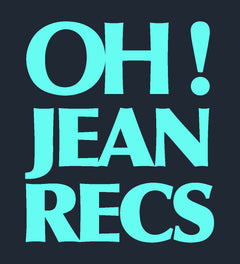Who is Ryuichi Sakamoto?
He is a Japanese composer, music producer, performer, and film director who has contributed to notable anime series, including Neon Genesis Evangelion, Cowboy Bebop, and Ghost in the Shell.
He began his professional career as a pianist. He played for many famous acts in Japan, including, Yumi Matsutoya, Hideki Saijo, and Hiroshi Otake. Esperanto Ryuichi Sakamoto is the most famous Album. After that, he joined a ZUNI group and became known for his works in the late ‘70s and ‘80s. In 1980, Mr. Sakamoto became interested in electronic music, and he formed a new group called Yellow Magic Orchestra 1981. The group produced many hits, including “Harabata,” “Happy Birthday,” and “Sukiyaki.”
His music has been described as “anthemic”, “emotive”, and “haunting”. His style has been compared to that of Brian Eno and David Bowie. Sakamoto has worked with various artists, including Yoko Kanno, Ryuichi Sakamoto, and David Sylvian. He is often credited for the pioneering synth in Japanese popular music.
Born in Tokyo, Japan, Sakamoto was born to a family of musicians, with his grandfather playing the shamisen and his father a pianist. He learned to play the shamisen at an early age and began composing at ten. Sakamoto studied composition at the Tokyo Music College and the Tokyo University of the Arts.
After graduating, he joined the avant-garde band Yellow Magic Orchestra and was featured as the band’s primary composer. In 1985, Sakamoto left the band and formed a new group, Broken Silence, later known as Super Beaver.
In 1990, Sakamoto released his first solo album, the critically acclaimed Fune Folklore, on the German label Zoth Ommog. The album was followed by a collaboration with Ryuichi Sakamoto, which yielded the critically acclaimed album No Brake, and a live recording called Live in Japan.
In 1992, Mr. Sakamoto left Yellow Magic Orchestra to pursue his solo career, and in 1993, he founded the band AIR. Mr. Sakamoto’s musical style was very different from Yellow Magic Orchestra’s, and he recorded an album called “The Last Sound.”
Sakamoto returned to Yellow Magic Orchestra in 1996 and produced several of their albums until they disbanded in 2005. In 2008, Sakamoto collaborated with Yoko Kanno for her soundtrack to The Last Airbender.
In 1998, Mr. Sakamoto was diagnosed with leukemia. He recovered and returned to music in 2000, releasing an album called “Love Song.” His music is still influential, and he’s won many awards. He is a musician who has contributed significantly to Japanese music.
In 2009, Sakamoto collaborated with David Sylvian on the album Nine Horses. In 2010, Sakamoto released the album, The Lost Tapes, which included contributions by members of Nine Inch Nails and the Foo Fighters.
In 2011, he collaborated with the Japanese band D’espairsRay, for their album, Sometime in June. In 2012, Sakamoto teamed up with Ryuichi Sakamoto again for the soundtrack to the movie, A Rainy Day in New York.
In 2014, Sakamoto collaborated with Ryuichi Sakamoto and Yoko Kanno for their album, The Shadow of the Sun. In 2015, he released the album Sakamoto and Ryuichi Sakamoto.
In 2016, Sakamoto collaborated with Ryuichi Sakamoto and Yoshinobu Takegami for the soundtrack to the movie, The Great Passage.
In 2017, Sakamoto collaborated with Ryuichi Sakamoto for the soundtrack to the movie Love and Peace on Earth.
In addition to his work in music and film, Sakamoto is also a professor at the Tokyo College of Music. The music on this album is some of the most beautiful music I’ve ever heard. It’s almost as if two different people are writing the music. One person writes music with a strong sense of melody and harmony, and the other uses a more experimental style. Both styles are used in this album.
This is the first time I’ve heard a Sakamoto album that I say is “pure Sakamoto.” It’s almost like hearing two completely different albums. If you’re looking for a Sakamoto album with a lot of experimentation, this is not the one for you. But suppose you’re looking for a Sakamoto album that has solid melodies and is filled with beautiful sounds. In that case, this is the one for you. You can listen to the entire album for free on Sakamoto’s website.
Sakamoto is also a filmmaker. He has worked with such directors as Satoshi Kon, Mamoru Oshii, and Hayao Miyazaki and has also directed several shorts.
Sakamoto’s works have won him many awards, including the 2002 Japan Record Award, the 2003 Grand Prix du Disque for Ryuichi Sakamoto, and the 2007 Japan Academy Prize. Sakamoto has received an honorary doctorate from the University of Paris and a Lifetime Achievement Award from the International Film Music Critics Association.
Last Words
In conclusion, it is no surprise that Mr. Sakamoto is a great musician. He has been called the God of electronic music and the producer of the ‘80s. He’s been making music since the 1960s and was named after his father’s Japanese name, Sakamoto. He’s the only child of Taro and Yuko Sakamoto. Mr. Sakamoto started out composing music with his father in the early 60s. Their first record was released in 1963 and Hidari Ude No Yume is another amazing album by Ryuichi Sakamoto. So, Check out now and enjoy the pleasent tracks.

